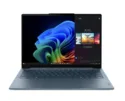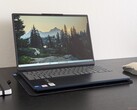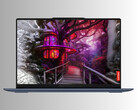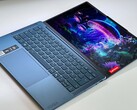Verdict - The Yoga Slim 7 14 has case quality issues
Above all, the new Yoga Slim 7 14 G10 impresses with its brilliant OLED display, which, aside from its enormous brightness in HDR mode, offers impressive picture quality in conjunction with a 120 Hz refresh rate and excellent color profiles. Although it uses PWM flickering, its frequency is super high and at the same time, its amplitude is very low. Its reflective surface may, however, become an issue when the laptop is used outdoors. Moreover, its good display harms the device's battery life, where the competition generally offers an advantage.
The performance of its AMD Ryzen processor is good and, thankfully, stable, so together with its 32 GB RAM, there are no problems in this discipline. The two faster energy profiles, on the other hand, are almost identical and we would have liked to see a bigger difference between them. If desired, the laptop's fans can stay quiet under load, too, and its performance is still on par with Intel's Lunar Lake processors when using the most frugal mode.
The biggest issue lies in its case quality. Although it's lightweight and compact, our test device is plagued by clearly noticeable creaking noises. This is especially so for its lid that creaks every time it moves, in turn vastly reducing how good-quality the laptop feels. On the flip side, it features all modern connectivity standards and its keyboard is super comfortable.
Pros
Cons
Price and availability
The version of the Yoga Slim 7 with the AMD processor isn't available to order yet in the USA. It has an MRSP of around $1,450.
Table of Contents
- Verdict - The Yoga Slim 7 14 has case quality issues
- Specifications
- Case - Aluminum with creaking noises
- Connectivity - USB 4.0 and Wi-Fi 7
- Input devices - Comfortable keyboard
- Display - Bright OLED at 120 Hz
- Performance - AMD Krackan Point
- Emissions
- Energy management - No runtime records
- Notebookcheck total rating
- Possible alternatives compared
After we recently already tested the current Yoga Pro 7 14 from Lenovo, it's now time for us to take a look at the slimmer Yoga Slim 7 14 which, aside from a thinner case, additionally uses a different OLED screen. It again uses the AMD Ryzen AI 7 350 as a processor in combination with the Radeon 860M iGPU and 32 GB RAM.
Specifications
Case - Aluminum with creaking noises
The Yoga Slim 7 14 is a slim 14-inch laptop with an aluminum case that comes in turquoise or gray. Our turquoise-colored test device looks high-quality, but this impression quickly dissipates when you take the device into your hands. As soon as you open the lid or adjust its angle, it lets off clear creaking noises every time. We also managed to elicit some subtle creaking noises from its base unit, which usually isn't typical for the Yoga series at all. Moreover, the screen hinges are a little too loose and the display bounces when you adjust its opening angle. All-in-all, not a very high-quality impression.
Weighing in at 1.22 kilograms, the Yoga Slim 7 14 is the lightest laptop in our comparison field. In addition, it takes up the smallest footprint, whereby the differences aren't all too big in this case. In short, the Yoga Slim is a pretty portable device which should fit effortlessly into most bags/backpacks. At 188 grams, its 65-watt power supply is also quite lightweight.
Connectivity - USB 4.0 and Wi-Fi 7
The Yoga Slim 7 14 comes with all the most important connections, including USB-C 4.0, a regular USB port as well as an HDMI output. These connections are spread out between the two sides at the back. In addition, the device comes with a modern Wi-Fi 7 module, which achieved very good and stable transfer rates during our standardized WLAN test using our reference router from Asus. Its webcam features an eShutter as well as an IR module for facial recognition via Windows Hello. Its picture quality is generally fine, although there are lots of devices with better webcams on the market these days. Thanks to the AMD processor's fast NPU, the device is classed as a Copilot+ laptop, so it also supports all of Microsoft's advanced AI functions (e.g. Studio Effects for the webcam, live subtitling). It isn't fitted with a card reader.
| Networking | |
| Lenovo Yoga Slim 7 14AKP G10 | |
| iperf3 transmit AXE11000 | |
| iperf3 receive AXE11000 | |
| Lenovo IdeaPad Pro 5 14AKP G10 | |
| iperf3 transmit AXE11000 | |
| iperf3 receive AXE11000 | |
| Medion SPRCHRGD 14 S2 | |
| iperf3 transmit AXE11000 | |
| iperf3 receive AXE11000 | |
| Asus Vivobook S 14 OLED S5406SA | |
| iperf3 transmit AXE11000 | |
| iperf3 receive AXE11000 | |
| HP OmniBook X 14 | |
| iperf3 transmit AXE11000 | |
| iperf3 receive AXE11000 | |
| Acer Swift 14 AI SF14-51-58TU | |
| iperf3 transmit AXE11000 | |
| iperf3 receive AXE11000 | |

Maintenance
Sustainability
The Yoga Slim 7 14 G10 meets a number of environmental standards (Carbon Neutral Certified, Energy Star 8.0, EPEAT Gold) and its packaging is fully recyclable. However, no information is provided on its CO2 footprint or the proportion of recycled materials used.
Input devices - Comfortable keyboard
The device's blue keyboard offers a very good contrast and in low light, two-level backlighting comes to the rescue—which can also be activated automatically. Its key travel is 1.5 millimeters and all-in-all, the keyboard is a super comfortable model similar to that of the Yoga Pro 7 14, which we've already tested. Its large ClickPad (13.5 x 8 centimeters) feels nice and smooth with precise operation, however, the mechanical clicks on the lower area are pretty loud and feel a little rickety.
Display - Bright OLED at 120 Hz
We've already been able to test the new 2.8K OLED display (2,880 x 1,800 pixels) quite a few times, and it delivers impressive picture quality inside the Yoga Slim 7 14, too. Its contrast levels are extremely high, colors appear vivid, all content looks razor-sharp, its response times are super fast and movements look buttery smooth thanks to its 120 Hz frequency. As this isn't a touchscreen, we noted no issues with grain when depicting light areas. There is no backlight bleeding on OLED panels—in turn, there is PWM flickering to contend with. At 1.2 kHz, its frequency is nice and high and its amplitude is low, which is why there shouldn't be any issues for users. Neither the screen brightness nor color temperature can be adjusted automatically.
In SDR mode, its brightness averages around 480 cd/m², which is good for a current OLED panel. In HDR mode, on the other hand, it reaches almost 1,100 cd/m² when depicting small image excerpts and still a decent 746 cd/m² when showing an almost fully white picture. This means HDR content in particular looks amazing on this OLED panel.
| |||||||||||||||||||||||||
Brightness Distribution: 97 %
Center on Battery: 478 cd/m²
Contrast: ∞:1 (Black: 0 cd/m²)
ΔE ColorChecker Calman: 1 | ∀{0.5-29.43 Ø4.78}
ΔE Greyscale Calman: 1.4 | ∀{0.09-98 Ø5}
87.8% AdobeRGB 1998 (Argyll 3D)
100% sRGB (Argyll 3D)
98.4% Display P3 (Argyll 3D)
Gamma: 2.25
CCT: 6521 K
| Lenovo Yoga Slim 7 14AKP G10 LEN140WQ+, OLED, 2880x1800, 14", 120 Hz | Lenovo IdeaPad Pro 5 14AKP G10 LEN140WQ+, OLED, 2880x1800, 14", 120 Hz | Medion SPRCHRGD 14 S2 CSOT MNE007ZA3-2, IPS, 2880x1800, 14", 120 Hz | Asus VivoBook S 14 OLED M5406WA ATNA40CT02-0 (SDC41A0), OLED, 1920x1200, 14", 60 Hz | HP OmniBook X 14 BOE0C93, IPS, 2240x1400, 14", 60 Hz | Acer Swift 14 AI SF14-51-58TU Samsung ATNA40YK11-0 (SDC4181), OLED, 2880x1800, 14", 90 Hz | |
|---|---|---|---|---|---|---|
| Display | 3% | -16% | 4% | -10% | 4% | |
| Display P3 Coverage (%) | 98.4 | 99.9 2% | 69.2 -30% | 99.9 2% | 78.9 -20% | 99.9 2% |
| sRGB Coverage (%) | 100 | 100 0% | 99.5 0% | 100 0% | 100 0% | 100 0% |
| AdobeRGB 1998 Coverage (%) | 87.8 | 94.5 8% | 71.2 -19% | 97.2 11% | 78.7 -10% | 97.6 11% |
| Response Times | 1% | -5351% | -185% | -9747% | -82% | |
| Response Time Grey 50% / Grey 80% * (ms) | 0.4 ? | 0.39 ? 2% | 31.2 ? -7700% | 1.3 ? -225% | 52 ? -12900% | 0.8 ? -100% |
| Response Time Black / White * (ms) | 0.49 ? | 0.49 ? -0% | 15.2 ? -3002% | 1.2 ? -145% | 32.8 ? -6594% | 0.8 ? -63% |
| PWM Frequency (Hz) | 1200 ? | 1200 ? | 240 ? | 60 ? | ||
| PWM Amplitude * (%) | 22 | 22 -0% | ||||
| Screen | -16% | -37% | -26% | -90% | -80% | |
| Brightness middle (cd/m²) | 478 | 473 -1% | 421 -12% | 385 -19% | 303 -37% | 500 5% |
| Brightness (cd/m²) | 484 | 474 -2% | 407 -16% | 382 -21% | 293 -39% | 499 3% |
| Brightness Distribution (%) | 97 | 99 2% | 94 -3% | 95 -2% | 90 -7% | 97 0% |
| Black Level * (cd/m²) | 0.35 | 0.03 | 0.17 | 0.01 | ||
| Colorchecker dE 2000 * | 1 | 1.2 -20% | 1.59 -59% | 1.99 -99% | 2.6 -160% | 3.55 -255% |
| Colorchecker dE 2000 max. * | 2.3 | 3.8 -65% | 3.7 -61% | 3.69 -60% | 5.4 -135% | 6.38 -177% |
| Greyscale dE 2000 * | 1.4 | 1.5 -7% | 2.4 -71% | 0.8 43% | 3.7 -164% | 2.2 -57% |
| Gamma | 2.25 98% | 2.27 97% | 2.209 100% | 2.204 100% | 2.09 105% | 1.94 113% |
| CCT | 6521 100% | 6214 105% | 7036 92% | 6474 100% | 6543 99% | 6405 101% |
| Contrast (:1) | 1203 | 12833 | 1782 | 50000 | ||
| Colorchecker dE 2000 calibrated * | 1 | 1.79 | 2.55 | |||
| Total Average (Program / Settings) | -4% /
-7% | -1801% /
-998% | -69% /
-47% | -3282% /
-1824% | -53% /
-57% |
* ... smaller is better
Lenovo advertizes factory calibration, which we were able to confirm with our analysis using the professional CalMAN software. The default profile depicts colors a little too oversaturated, but the two profiles P3 and sRGB show excellent values that we couldn't improve any further with our own calibration. The AdobeRGB profile revealed almost shockingly high color deviations, as the screen doesn't cover this color space entirely. Still, you can edit photos/videos in the sRGB and P3 color spaces without any limitations.
Display Response Times
| ↔ Response Time Black to White | ||
|---|---|---|
| 0.49 ms ... rise ↗ and fall ↘ combined | ↗ 0.27 ms rise | |
| ↘ 0.22 ms fall | ||
| The screen shows very fast response rates in our tests and should be very well suited for fast-paced gaming. In comparison, all tested devices range from 0.1 (minimum) to 240 (maximum) ms. » 0 % of all devices are better. This means that the measured response time is better than the average of all tested devices (20.2 ms). | ||
| ↔ Response Time 50% Grey to 80% Grey | ||
| 0.4 ms ... rise ↗ and fall ↘ combined | ↗ 0.23 ms rise | |
| ↘ 0.17 ms fall | ||
| The screen shows very fast response rates in our tests and should be very well suited for fast-paced gaming. In comparison, all tested devices range from 0.165 (minimum) to 636 (maximum) ms. » 1 % of all devices are better. This means that the measured response time is better than the average of all tested devices (31.6 ms). | ||
Screen Flickering / PWM (Pulse-Width Modulation)
| Screen flickering / PWM detected | 1200 Hz Amplitude: 22 % | ≤ 100 % brightness setting | |
The display backlight flickers at 1200 Hz (worst case, e.g., utilizing PWM) Flickering detected at a brightness setting of 100 % and below. There should be no flickering or PWM above this brightness setting. The frequency of 1200 Hz is quite high, so most users sensitive to PWM should not notice any flickering. In comparison: 53 % of all tested devices do not use PWM to dim the display. If PWM was detected, an average of 8091 (minimum: 5 - maximum: 343500) Hz was measured. | |||
Performance - AMD Krackan Point
Testing conditions
Lenovo offers all the familiar energy profiles, which you can easily switch between via the Fn+Q key combination. We ran the benchmarks in Performance mode, but we would have liked to see a greater spread between Auto and Performance. The performance of the three profiles remains identical in battery mode.
| Energy profile | TDP | CB 2024 Multi | Time Spy Graphics | Cyberpunk 2077 1080p Low | max. fan noise emissions |
|---|---|---|---|---|---|
| Battery-saving | 15 watts | 577 points | 2,164 points | 27.7fps | 29.6 dB(A) |
| Auto | 54/42 watts | 890 points | 2,879 points | 39.9fps | 41 dB(A) |
| Performance | 54/45 watts | 901 points | 2,868 points | 40.4fps | 44.1 dB(A) |
Processor - AMD Ryzen AI 7 350
The AMD Ryzen AI 7 350 (Krackan Point) combines four fast Zen 5 cores (max. 5 GHz) with four more efficient Zen 5 cores (max. 3.5 GHz, less cache). Its overall performance is very good and during our test, the Yoga was only beaten by the IdeaPad Pro 5, inside which the Ryzen AI 7 350 can also consume 65 watts. It clearly outperformed the Lunar Lake chips from Intel, especially when it came to multi-core performance.
Cinebench R15 Multi continuous test
Cinebench 2024: CPU Multi Core | CPU Single Core
Cinebench R23: Multi Core | Single Core
Cinebench R20: CPU (Multi Core) | CPU (Single Core)
Cinebench R15: CPU Multi 64Bit | CPU Single 64Bit
Blender: v2.79 BMW27 CPU
7-Zip 18.03: 7z b 4 | 7z b 4 -mmt1
Geekbench 6.5: Multi-Core | Single-Core
Geekbench 5.5: Multi-Core | Single-Core
HWBOT x265 Benchmark v2.2: 4k Preset
LibreOffice : 20 Documents To PDF
R Benchmark 2.5: Overall mean
| CPU Performance rating | |
| Lenovo IdeaPad Pro 5 14AKP G10 | |
| Lenovo Yoga Slim 7 14AKP G10 | |
| Average AMD Ryzen AI 7 350 | |
| Medion SPRCHRGD 14 S2 | |
| Average of class Subnotebook | |
| Asus Vivobook S 14 OLED S5406SA | |
| Acer Swift 14 AI SF14-51-58TU | |
| HP OmniBook X 14 -3! | |
| Cinebench 2024 / CPU Multi Core | |
| Lenovo IdeaPad Pro 5 14AKP G10 | |
| Lenovo Yoga Slim 7 14AKP G10 | |
| Average AMD Ryzen AI 7 350 (720 - 1011, n=13) | |
| HP OmniBook X 14 | |
| Average of class Subnotebook (148 - 1162, n=68, last 2 years) | |
| Asus Vivobook S 14 OLED S5406SA | |
| Medion SPRCHRGD 14 S2 | |
| Acer Swift 14 AI SF14-51-58TU | |
| Cinebench 2024 / CPU Single Core | |
| Medion SPRCHRGD 14 S2 | |
| Lenovo IdeaPad Pro 5 14AKP G10 | |
| Average AMD Ryzen AI 7 350 (113.5 - 119, n=13) | |
| Lenovo Yoga Slim 7 14AKP G10 | |
| Average of class Subnotebook (35 - 173, n=54, last 2 years) | |
| Asus Vivobook S 14 OLED S5406SA | |
| Acer Swift 14 AI SF14-51-58TU | |
| HP OmniBook X 14 | |
| Cinebench R23 / Multi Core | |
| Lenovo IdeaPad Pro 5 14AKP G10 | |
| Lenovo Yoga Slim 7 14AKP G10 | |
| Average AMD Ryzen AI 7 350 (12647 - 17899, n=16) | |
| Average of class Subnotebook (1555 - 21812, n=73, last 2 years) | |
| Medion SPRCHRGD 14 S2 | |
| HP OmniBook X 14 | |
| Asus Vivobook S 14 OLED S5406SA | |
| Acer Swift 14 AI SF14-51-58TU | |
| Cinebench R23 / Single Core | |
| Lenovo IdeaPad Pro 5 14AKP G10 | |
| Lenovo Yoga Slim 7 14AKP G10 | |
| Average AMD Ryzen AI 7 350 (1916 - 2006, n=16) | |
| Medion SPRCHRGD 14 S2 | |
| Asus Vivobook S 14 OLED S5406SA | |
| Average of class Subnotebook (358 - 2165, n=74, last 2 years) | |
| Acer Swift 14 AI SF14-51-58TU | |
| HP OmniBook X 14 | |
| Cinebench R20 / CPU (Multi Core) | |
| Lenovo IdeaPad Pro 5 14AKP G10 | |
| Lenovo Yoga Slim 7 14AKP G10 | |
| Average AMD Ryzen AI 7 350 (4897 - 6990, n=14) | |
| Average of class Subnotebook (579 - 8541, n=68, last 2 years) | |
| HP OmniBook X 14 | |
| Medion SPRCHRGD 14 S2 | |
| Asus Vivobook S 14 OLED S5406SA | |
| Acer Swift 14 AI SF14-51-58TU | |
| Cinebench R20 / CPU (Single Core) | |
| Lenovo IdeaPad Pro 5 14AKP G10 | |
| Lenovo Yoga Slim 7 14AKP G10 | |
| Average AMD Ryzen AI 7 350 (751 - 784, n=14) | |
| Medion SPRCHRGD 14 S2 | |
| Asus Vivobook S 14 OLED S5406SA | |
| Acer Swift 14 AI SF14-51-58TU | |
| Average of class Subnotebook (128 - 826, n=68, last 2 years) | |
| HP OmniBook X 14 | |
| Cinebench R15 / CPU Multi 64Bit | |
| Lenovo IdeaPad Pro 5 14AKP G10 | |
| Lenovo Yoga Slim 7 14AKP G10 | |
| Average AMD Ryzen AI 7 350 (1932 - 2734, n=15) | |
| HP OmniBook X 14 | |
| Average of class Subnotebook (327 - 3345, n=68, last 2 years) | |
| Medion SPRCHRGD 14 S2 | |
| Asus Vivobook S 14 OLED S5406SA | |
| Acer Swift 14 AI SF14-51-58TU | |
| Cinebench R15 / CPU Single 64Bit | |
| Lenovo IdeaPad Pro 5 14AKP G10 | |
| Lenovo Yoga Slim 7 14AKP G10 | |
| Medion SPRCHRGD 14 S2 | |
| Average AMD Ryzen AI 7 350 (204 - 305, n=15) | |
| Acer Swift 14 AI SF14-51-58TU | |
| Asus Vivobook S 14 OLED S5406SA | |
| Average of class Subnotebook (72.4 - 322, n=68, last 2 years) | |
| HP OmniBook X 14 | |
| Blender / v2.79 BMW27 CPU | |
| HP OmniBook X 14 | |
| Average of class Subnotebook (159 - 2271, n=71, last 2 years) | |
| Acer Swift 14 AI SF14-51-58TU | |
| Asus Vivobook S 14 OLED S5406SA | |
| Medion SPRCHRGD 14 S2 | |
| Average AMD Ryzen AI 7 350 (182 - 386, n=15) | |
| Lenovo Yoga Slim 7 14AKP G10 | |
| Lenovo IdeaPad Pro 5 14AKP G10 | |
| 7-Zip 18.03 / 7z b 4 | |
| Lenovo IdeaPad Pro 5 14AKP G10 | |
| Lenovo Yoga Slim 7 14AKP G10 | |
| Average AMD Ryzen AI 7 350 (48124 - 64653, n=14) | |
| HP OmniBook X 14 | |
| Average of class Subnotebook (11668 - 77867, n=68, last 2 years) | |
| Medion SPRCHRGD 14 S2 | |
| Asus Vivobook S 14 OLED S5406SA | |
| Acer Swift 14 AI SF14-51-58TU | |
| 7-Zip 18.03 / 7z b 4 -mmt1 | |
| Lenovo IdeaPad Pro 5 14AKP G10 | |
| Lenovo Yoga Slim 7 14AKP G10 | |
| Average AMD Ryzen AI 7 350 (5544 - 6371, n=14) | |
| Medion SPRCHRGD 14 S2 | |
| Average of class Subnotebook (2643 - 6442, n=70, last 2 years) | |
| Acer Swift 14 AI SF14-51-58TU | |
| Asus Vivobook S 14 OLED S5406SA | |
| HP OmniBook X 14 | |
| Geekbench 6.5 / Multi-Core | |
| Lenovo IdeaPad Pro 5 14AKP G10 | |
| Lenovo Yoga Slim 7 14AKP G10 | |
| Average AMD Ryzen AI 7 350 (10774 - 14194, n=15) | |
| HP OmniBook X 14 | |
| Average of class Subnotebook (2244 - 17489, n=79, last 2 years) | |
| Medion SPRCHRGD 14 S2 | |
| Asus Vivobook S 14 OLED S5406SA | |
| Acer Swift 14 AI SF14-51-58TU | |
| Geekbench 6.5 / Single-Core | |
| Lenovo IdeaPad Pro 5 14AKP G10 | |
| Lenovo Yoga Slim 7 14AKP G10 | |
| Medion SPRCHRGD 14 S2 | |
| Average AMD Ryzen AI 7 350 (1874 - 2942, n=15) | |
| Average of class Subnotebook (960 - 3820, n=73, last 2 years) | |
| Asus Vivobook S 14 OLED S5406SA | |
| Acer Swift 14 AI SF14-51-58TU | |
| HP OmniBook X 14 | |
| Geekbench 5.5 / Multi-Core | |
| Lenovo IdeaPad Pro 5 14AKP G10 | |
| Lenovo Yoga Slim 7 14AKP G10 | |
| Average AMD Ryzen AI 7 350 (6705 - 12968, n=16) | |
| Average of class Subnotebook (2557 - 17218, n=63, last 2 years) | |
| Medion SPRCHRGD 14 S2 | |
| Asus Vivobook S 14 OLED S5406SA | |
| Acer Swift 14 AI SF14-51-58TU | |
| Geekbench 5.5 / Single-Core | |
| Lenovo IdeaPad Pro 5 14AKP G10 | |
| Lenovo Yoga Slim 7 14AKP G10 | |
| Medion SPRCHRGD 14 S2 | |
| Asus Vivobook S 14 OLED S5406SA | |
| Average of class Subnotebook (726 - 2350, n=63, last 2 years) | |
| Average AMD Ryzen AI 7 350 (805 - 2155, n=16) | |
| Acer Swift 14 AI SF14-51-58TU | |
| HWBOT x265 Benchmark v2.2 / 4k Preset | |
| Lenovo IdeaPad Pro 5 14AKP G10 | |
| Average AMD Ryzen AI 7 350 (14 - 22.9, n=14) | |
| Lenovo Yoga Slim 7 14AKP G10 | |
| Average of class Subnotebook (0.97 - 25.1, n=68, last 2 years) | |
| Medion SPRCHRGD 14 S2 | |
| Asus Vivobook S 14 OLED S5406SA | |
| Acer Swift 14 AI SF14-51-58TU | |
| HP OmniBook X 14 | |
| LibreOffice / 20 Documents To PDF | |
| Acer Swift 14 AI SF14-51-58TU | |
| Asus Vivobook S 14 OLED S5406SA | |
| Average AMD Ryzen AI 7 350 (43.3 - 88.8, n=14) | |
| Average of class Subnotebook (38.5 - 220, n=67, last 2 years) | |
| Medion SPRCHRGD 14 S2 | |
| Lenovo Yoga Slim 7 14AKP G10 | |
| Lenovo IdeaPad Pro 5 14AKP G10 | |
| R Benchmark 2.5 / Overall mean | |
| HP OmniBook X 14 | |
| Average of class Subnotebook (0.403 - 1.456, n=69, last 2 years) | |
| Acer Swift 14 AI SF14-51-58TU | |
| Asus Vivobook S 14 OLED S5406SA | |
| Medion SPRCHRGD 14 S2 | |
| Average AMD Ryzen AI 7 350 (0.403 - 0.4934, n=14) | |
| Lenovo Yoga Slim 7 14AKP G10 | |
| Lenovo IdeaPad Pro 5 14AKP G10 | |
* ... smaller is better
AIDA64: FP32 Ray-Trace | FPU Julia | CPU SHA3 | CPU Queen | FPU SinJulia | FPU Mandel | CPU AES | CPU ZLib | FP64 Ray-Trace | CPU PhotoWorxx
| Performance rating | |
| Lenovo IdeaPad Pro 5 14AKP G10 | |
| Lenovo Yoga Slim 7 14AKP G10 | |
| Average AMD Ryzen AI 7 350 | |
| Average of class Subnotebook | |
| Medion SPRCHRGD 14 S2 | |
| Asus Vivobook S 14 OLED S5406SA | |
| Acer Swift 14 AI SF14-51-58TU | |
| HP OmniBook X 14 | |
| AIDA64 / FP32 Ray-Trace | |
| Lenovo IdeaPad Pro 5 14AKP G10 | |
| Lenovo Yoga Slim 7 14AKP G10 | |
| Average AMD Ryzen AI 7 350 (20203 - 28112, n=14) | |
| Average of class Subnotebook (1135 - 32888, n=67, last 2 years) | |
| Medion SPRCHRGD 14 S2 | |
| Asus Vivobook S 14 OLED S5406SA | |
| Acer Swift 14 AI SF14-51-58TU | |
| HP OmniBook X 14 | |
| AIDA64 / FPU Julia | |
| Lenovo IdeaPad Pro 5 14AKP G10 | |
| Lenovo Yoga Slim 7 14AKP G10 | |
| Average AMD Ryzen AI 7 350 (75098 - 108991, n=14) | |
| Average of class Subnotebook (5218 - 123315, n=67, last 2 years) | |
| Acer Swift 14 AI SF14-51-58TU | |
| Asus Vivobook S 14 OLED S5406SA | |
| Medion SPRCHRGD 14 S2 | |
| HP OmniBook X 14 | |
| AIDA64 / CPU SHA3 | |
| Lenovo IdeaPad Pro 5 14AKP G10 | |
| Lenovo Yoga Slim 7 14AKP G10 | |
| Average AMD Ryzen AI 7 350 (3395 - 4399, n=14) | |
| HP OmniBook X 14 | |
| Average of class Subnotebook (444 - 5287, n=67, last 2 years) | |
| Medion SPRCHRGD 14 S2 | |
| Acer Swift 14 AI SF14-51-58TU | |
| Asus Vivobook S 14 OLED S5406SA | |
| AIDA64 / CPU Queen | |
| Lenovo IdeaPad Pro 5 14AKP G10 | |
| Lenovo Yoga Slim 7 14AKP G10 | |
| Average AMD Ryzen AI 7 350 (67317 - 77400, n=14) | |
| HP OmniBook X 14 | |
| Average of class Subnotebook (10579 - 115682, n=67, last 2 years) | |
| Medion SPRCHRGD 14 S2 | |
| Acer Swift 14 AI SF14-51-58TU | |
| Asus Vivobook S 14 OLED S5406SA | |
| AIDA64 / FPU SinJulia | |
| Lenovo IdeaPad Pro 5 14AKP G10 | |
| Lenovo Yoga Slim 7 14AKP G10 | |
| Average AMD Ryzen AI 7 350 (11916 - 13856, n=14) | |
| Average of class Subnotebook (744 - 18418, n=67, last 2 years) | |
| Medion SPRCHRGD 14 S2 | |
| Asus Vivobook S 14 OLED S5406SA | |
| Acer Swift 14 AI SF14-51-58TU | |
| HP OmniBook X 14 | |
| AIDA64 / FPU Mandel | |
| Lenovo IdeaPad Pro 5 14AKP G10 | |
| Lenovo Yoga Slim 7 14AKP G10 | |
| Average AMD Ryzen AI 7 350 (39456 - 58771, n=13) | |
| Average of class Subnotebook (3341 - 65433, n=67, last 2 years) | |
| Asus Vivobook S 14 OLED S5406SA | |
| Acer Swift 14 AI SF14-51-58TU | |
| Medion SPRCHRGD 14 S2 | |
| HP OmniBook X 14 | |
| AIDA64 / CPU AES | |
| Lenovo Yoga Slim 7 14AKP G10 | |
| Average AMD Ryzen AI 7 350 (56915 - 87670, n=14) | |
| HP OmniBook X 14 | |
| Average of class Subnotebook (638 - 161430, n=67, last 2 years) | |
| Lenovo IdeaPad Pro 5 14AKP G10 | |
| Medion SPRCHRGD 14 S2 | |
| Acer Swift 14 AI SF14-51-58TU | |
| Asus Vivobook S 14 OLED S5406SA | |
| AIDA64 / CPU ZLib | |
| Lenovo IdeaPad Pro 5 14AKP G10 | |
| Lenovo Yoga Slim 7 14AKP G10 | |
| Average AMD Ryzen AI 7 350 (663 - 1138, n=14) | |
| Average of class Subnotebook (164.9 - 1379, n=67, last 2 years) | |
| HP OmniBook X 14 | |
| Medion SPRCHRGD 14 S2 | |
| Asus Vivobook S 14 OLED S5406SA | |
| Acer Swift 14 AI SF14-51-58TU | |
| AIDA64 / FP64 Ray-Trace | |
| Lenovo IdeaPad Pro 5 14AKP G10 | |
| Lenovo Yoga Slim 7 14AKP G10 | |
| Average AMD Ryzen AI 7 350 (10707 - 15203, n=13) | |
| Average of class Subnotebook (610 - 17495, n=67, last 2 years) | |
| Asus Vivobook S 14 OLED S5406SA | |
| Acer Swift 14 AI SF14-51-58TU | |
| Medion SPRCHRGD 14 S2 | |
| HP OmniBook X 14 | |
| AIDA64 / CPU PhotoWorxx | |
| Medion SPRCHRGD 14 S2 | |
| Acer Swift 14 AI SF14-51-58TU | |
| Asus Vivobook S 14 OLED S5406SA | |
| Lenovo IdeaPad Pro 5 14AKP G10 | |
| Average of class Subnotebook (6569 - 64588, n=67, last 2 years) | |
| Lenovo Yoga Slim 7 14AKP G10 | |
| Average AMD Ryzen AI 7 350 (25283 - 47405, n=14) | |
| HP OmniBook X 14 | |
System performance
During everyday use, the Yoga Slim 7 is a super fast device, and its synthetic benchmark results underlined this. We noted no stability issues during the course of the test.
PCMark 10: Score | Essentials | Productivity | Digital Content Creation
CrossMark: Overall | Productivity | Creativity | Responsiveness
WebXPRT 3: Overall
WebXPRT 4: Overall
Mozilla Kraken 1.1: Total
| Performance rating | |
| Lenovo IdeaPad Pro 5 14AKP G10 | |
| Lenovo Yoga Slim 7 14AKP G10 | |
| Average AMD Ryzen AI 7 350, AMD Radeon 860M | |
| Average of class Subnotebook | |
| Asus Vivobook S 14 OLED S5406SA | |
| Acer Swift 14 AI SF14-51-58TU -5! | |
| Medion SPRCHRGD 14 S2 -4! | |
| HP OmniBook X 14 -4! | |
| PCMark 10 / Score | |
| Average AMD Ryzen AI 7 350, AMD Radeon 860M (6982 - 8424, n=11) | |
| Lenovo Yoga Slim 7 14AKP G10 | |
| Lenovo IdeaPad Pro 5 14AKP G10 | |
| Average of class Subnotebook (4920 - 8424, n=55, last 2 years) | |
| Medion SPRCHRGD 14 S2 | |
| Asus Vivobook S 14 OLED S5406SA | |
| Acer Swift 14 AI SF14-51-58TU | |
| PCMark 10 / Essentials | |
| Lenovo Yoga Slim 7 14AKP G10 | |
| Average AMD Ryzen AI 7 350, AMD Radeon 860M (10801 - 12383, n=11) | |
| Lenovo IdeaPad Pro 5 14AKP G10 | |
| Average of class Subnotebook (8552 - 11406, n=55, last 2 years) | |
| Medion SPRCHRGD 14 S2 | |
| Acer Swift 14 AI SF14-51-58TU | |
| Asus Vivobook S 14 OLED S5406SA | |
| PCMark 10 / Productivity | |
| Average AMD Ryzen AI 7 350, AMD Radeon 860M (9674 - 16132, n=11) | |
| Lenovo IdeaPad Pro 5 14AKP G10 | |
| Lenovo Yoga Slim 7 14AKP G10 | |
| Average of class Subnotebook (5435 - 16132, n=55, last 2 years) | |
| Asus Vivobook S 14 OLED S5406SA | |
| Acer Swift 14 AI SF14-51-58TU | |
| Medion SPRCHRGD 14 S2 | |
| PCMark 10 / Digital Content Creation | |
| Medion SPRCHRGD 14 S2 | |
| Lenovo Yoga Slim 7 14AKP G10 | |
| Lenovo IdeaPad Pro 5 14AKP G10 | |
| Average AMD Ryzen AI 7 350, AMD Radeon 860M (8746 - 10028, n=11) | |
| Average of class Subnotebook (5722 - 12442, n=55, last 2 years) | |
| Asus Vivobook S 14 OLED S5406SA | |
| Acer Swift 14 AI SF14-51-58TU | |
| CrossMark / Overall | |
| Lenovo IdeaPad Pro 5 14AKP G10 | |
| Lenovo Yoga Slim 7 14AKP G10 | |
| Average AMD Ryzen AI 7 350, AMD Radeon 860M (1406 - 2005, n=11) | |
| Average of class Subnotebook (365 - 2038, n=68, last 2 years) | |
| Asus Vivobook S 14 OLED S5406SA | |
| HP OmniBook X 14 | |
| CrossMark / Productivity | |
| Lenovo IdeaPad Pro 5 14AKP G10 | |
| Lenovo Yoga Slim 7 14AKP G10 | |
| Average AMD Ryzen AI 7 350, AMD Radeon 860M (1247 - 1869, n=11) | |
| Average of class Subnotebook (364 - 1918, n=68, last 2 years) | |
| Asus Vivobook S 14 OLED S5406SA | |
| HP OmniBook X 14 | |
| CrossMark / Creativity | |
| Lenovo IdeaPad Pro 5 14AKP G10 | |
| Lenovo Yoga Slim 7 14AKP G10 | |
| Average AMD Ryzen AI 7 350, AMD Radeon 860M (1676 - 2236, n=11) | |
| Average of class Subnotebook (372 - 2396, n=68, last 2 years) | |
| Asus Vivobook S 14 OLED S5406SA | |
| HP OmniBook X 14 | |
| CrossMark / Responsiveness | |
| Lenovo IdeaPad Pro 5 14AKP G10 | |
| Lenovo Yoga Slim 7 14AKP G10 | |
| Average AMD Ryzen AI 7 350, AMD Radeon 860M (1169 - 1784, n=11) | |
| Average of class Subnotebook (312 - 1889, n=68, last 2 years) | |
| Asus Vivobook S 14 OLED S5406SA | |
| HP OmniBook X 14 | |
| WebXPRT 3 / Overall | |
| HP OmniBook X 14 | |
| Lenovo IdeaPad Pro 5 14AKP G10 | |
| Lenovo Yoga Slim 7 14AKP G10 | |
| Average of class Subnotebook (156 - 482, n=67, last 2 years) | |
| Average AMD Ryzen AI 7 350, AMD Radeon 860M (259 - 328, n=11) | |
| Asus Vivobook S 14 OLED S5406SA | |
| Medion SPRCHRGD 14 S2 | |
| WebXPRT 4 / Overall | |
| Lenovo Yoga Slim 7 14AKP G10 | |
| HP OmniBook X 14 | |
| Lenovo IdeaPad Pro 5 14AKP G10 | |
| Average of class Subnotebook (132 - 348, n=70, last 2 years) | |
| Asus Vivobook S 14 OLED S5406SA | |
| Average AMD Ryzen AI 7 350, AMD Radeon 860M (199.1 - 275, n=11) | |
| Acer Swift 14 AI SF14-51-58TU | |
| Acer Swift 14 AI SF14-51-58TU | |
| Medion SPRCHRGD 14 S2 | |
| Mozilla Kraken 1.1 / Total | |
| Acer Swift 14 AI SF14-51-58TU | |
| Acer Swift 14 AI SF14-51-58TU | |
| Average AMD Ryzen AI 7 350, AMD Radeon 860M (434 - 702, n=11) | |
| Asus Vivobook S 14 OLED S5406SA | |
| Average of class Subnotebook (265 - 1104, n=72, last 2 years) | |
| Medion SPRCHRGD 14 S2 | |
| HP OmniBook X 14 | |
| Lenovo IdeaPad Pro 5 14AKP G10 | |
| Lenovo Yoga Slim 7 14AKP G10 | |
* ... smaller is better
| PCMark 10 Score | 7418 points | |
Help | ||
| AIDA64 / Memory Copy | |
| Medion SPRCHRGD 14 S2 | |
| Asus Vivobook S 14 OLED S5406SA | |
| Acer Swift 14 AI SF14-51-58TU | |
| Lenovo IdeaPad Pro 5 14AKP G10 | |
| Lenovo Yoga Slim 7 14AKP G10 | |
| Average of class Subnotebook (14554 - 109035, n=67, last 2 years) | |
| Average AMD Ryzen AI 7 350 (38001 - 106997, n=14) | |
| HP OmniBook X 14 | |
| AIDA64 / Memory Read | |
| HP OmniBook X 14 | |
| Medion SPRCHRGD 14 S2 | |
| Asus Vivobook S 14 OLED S5406SA | |
| Acer Swift 14 AI SF14-51-58TU | |
| Average of class Subnotebook (15948 - 127174, n=67, last 2 years) | |
| Lenovo Yoga Slim 7 14AKP G10 | |
| Lenovo IdeaPad Pro 5 14AKP G10 | |
| Average AMD Ryzen AI 7 350 (44209 - 63650, n=14) | |
| AIDA64 / Memory Write | |
| Medion SPRCHRGD 14 S2 | |
| Asus Vivobook S 14 OLED S5406SA | |
| Acer Swift 14 AI SF14-51-58TU | |
| Lenovo IdeaPad Pro 5 14AKP G10 | |
| Lenovo Yoga Slim 7 14AKP G10 | |
| Average AMD Ryzen AI 7 350 (42604 - 110817, n=14) | |
| Average of class Subnotebook (15709 - 117898, n=67, last 2 years) | |
| HP OmniBook X 14 | |
| AIDA64 / Memory Latency | |
| Average of class Subnotebook (6.8 - 187.8, n=66, last 2 years) | |
| Lenovo IdeaPad Pro 5 14AKP G10 | |
| Lenovo Yoga Slim 7 14AKP G10 | |
| Average AMD Ryzen AI 7 350 (87.7 - 109.8, n=14) | |
| Medion SPRCHRGD 14 S2 | |
| Asus Vivobook S 14 OLED S5406SA | |
| Acer Swift 14 AI SF14-51-58TU | |
| HP OmniBook X 14 | |
* ... smaller is better
DPC latencies
| DPC Latencies / LatencyMon - interrupt to process latency (max), Web, Youtube, Prime95 | |
| Lenovo Yoga Slim 7 14AKP G10 | |
| Medion SPRCHRGD 14 S2 | |
| Acer Swift 14 AI SF14-51-58TU | |
| Asus Vivobook S 14 OLED S5406SA | |
| Lenovo IdeaPad Pro 5 14AKP G10 | |
* ... smaller is better
Storage device
Our test device is equipped with a 1 TB SSD from Kioxia, which is connected via PCIe 4.0. The performance of the M.2-2242 SSD was perfectly fine during our test, remaining stable even under prolonged load. After first starting up the device, users have 890 GB at their disposal.
* ... smaller is better
Reading continuous performance: DiskSpd Read Loop, Queue Depth 8
GPU
The AMD processor is equipped with the integrated AMD Radeon 860M graphics card. Its performance is sufficient during everyday use, and playing back high-resolution videos, for example, is no problem. In terms of its pure performance, the Radeon 860M is comparable to the Arc Graphics 130V, but both the 880M/890M and the Arc Graphics 140V/140T are significantly faster. Its gaming performance is as expected, and you can run current games such as Cyberpunk 2077 or Baldur's Gate 3 smoothly—at least with low details.
The GPU's performance remains stable both in battery mode and under constant load. Further benchmarks are available in our tech section.
| 3DMark 11 Performance | 11800 points | |
| 3DMark Fire Strike Score | 6715 points | |
| 3DMark Time Spy Score | 3147 points | |
| 3DMark Steel Nomad Score | 378 points | |
| 3DMark Steel Nomad Light Score | 2431 points | |
| 3DMark Steel Nomad Light Unlimited Score | 2425 points | |
Help | ||
| Blender / v3.3 Classroom CPU | |
| HP OmniBook X 14 | |
| Acer Swift 14 AI SF14-51-58TU | |
| Asus Vivobook S 14 OLED S5406SA | |
| Medion SPRCHRGD 14 S2 | |
| Average of class Subnotebook (241 - 861, n=70, last 2 years) | |
| Average AMD Radeon 860M (283 - 427, n=17) | |
| Lenovo Yoga Slim 7 14AKP G10 | |
| Lenovo IdeaPad Pro 5 14AKP G10 | |
* ... smaller is better
| Final Fantasy XV Benchmark - 1920x1080 High Quality | |
| Medion SPRCHRGD 14 S2 | |
| Lenovo IdeaPad Pro 5 14AKP G10 | |
| Acer Swift 14 AI SF14-51-58TU | |
| Asus Vivobook S 14 OLED S5406SA | |
| Lenovo Yoga Slim 7 14AKP G10 | |
| Average of class Subnotebook (11.6 - 37.2, n=68, last 2 years) | |
| HP OmniBook X 14 | |
| Dota 2 Reborn - 1920x1080 ultra (3/3) best looking | |
| Medion SPRCHRGD 14 S2 | |
| Asus Vivobook S 14 OLED S5406SA | |
| Lenovo IdeaPad Pro 5 14AKP G10 | |
| Lenovo Yoga Slim 7 14AKP G10 | |
| Acer Swift 14 AI SF14-51-58TU | |
| Average of class Subnotebook (13 - 94.9, n=72, last 2 years) | |
| HP OmniBook X 14 | |
Cyberpunk 2077 ultra FPS diagram
| low | med. | high | ultra | |
|---|---|---|---|---|
| GTA V (2015) | 173.2 | 157.4 | 70 | 27.8 |
| Dota 2 Reborn (2015) | 165.9 | 134.9 | 82.1 | 77 |
| Final Fantasy XV Benchmark (2018) | 78.7 | 37.9 | 27.1 | |
| X-Plane 11.11 (2018) | 77.6 | 59 | 48.6 | |
| Far Cry 5 (2018) | 97 | 52 | 47 | 44 |
| Strange Brigade (2018) | 165.4 | 65 | 53.9 | 45.7 |
| Baldur's Gate 3 (2023) | 36 | 29 | 23 | 22.5 |
| Cyberpunk 2077 (2023) | 40.4 | 29.9 | 23.6 | 19.1 |
| F1 24 (2024) | 72.9 | 65.2 | 48.7 | 10.4 |
Emissions
Noise emissions
When idling and under low load, the Slim 7 is a very quiet device and you can actually use the Battery-Saving mode without hesitation during everyday use, where you'll only hear a low noise even under load. In the other two modes, however, it gets significantly louder at more than 40 dB(A). There were no other electronic noises on our test device.
Noise level
| Idle |
| 24 / 24 / 27.2 dB(A) |
| Load |
| 44.1 / 44.1 dB(A) |
 | ||
30 dB silent 40 dB(A) audible 50 dB(A) loud |
||
min: | ||
| Lenovo Yoga Slim 7 14AKP G10 Radeon 860M, Ryzen AI 7 350, Kioxia BG6 KBG60ZNS1T02 | Lenovo IdeaPad Pro 5 14AKP G10 Radeon 860M, Ryzen AI 7 350, SK hynix PVC10 HFS001TEM4X182N | Medion SPRCHRGD 14 S2 Arc 140V, Core Ultra 7 258V | Asus Vivobook S 14 OLED S5406SA Arc 130V, Core Ultra 5 226V, Micron 2500 MTFDKBA512QGN | HP OmniBook X 14 Adreno X1-85 3.8 TFLOPS, SD X Elite X1E-78-100, WD PC SN560 SDDPNQE-1T00 | Acer Swift 14 AI SF14-51-58TU Arc 130V, Core Ultra 5 226V, Micron 2550 512GB | |
|---|---|---|---|---|---|---|
| Noise | -1% | -3% | 8% | 12% | 0% | |
| off / environment * (dB) | 24 | 23.6 2% | 24 -0% | 24.2 -1% | 23.7 1% | 25 -4% |
| Idle Minimum * (dB) | 24 | 23.6 2% | 24 -0% | 24.2 -1% | 23.7 1% | 25 -4% |
| Idle Average * (dB) | 24 | 23.6 2% | 25 -4% | 24.2 -1% | 23.7 1% | 26 -8% |
| Idle Maximum * (dB) | 27.2 | 23.6 13% | 26 4% | 24.2 11% | 23.7 13% | 29 -7% |
| Load Average * (dB) | 44.1 | 46.5 -5% | 45 -2% | 28.8 35% | 29.7 33% | 40 9% |
| Cyberpunk 2077 ultra * (dB) | 44.1 | 48.9 -11% | 48 -9% | 37.6 15% | 37.1 16% | 40 9% |
| Load Maximum * (dB) | 44.1 | 48.9 -11% | 48 -9% | 45.6 -3% | 37.1 16% | 41 7% |
* ... smaller is better
Temperature
The laptop's aluminum case stays very cool during simple tasks. Under load, the upper left half of the case in particular heats up and we measured more than 40 °C in the keyboard area during our test, which you can feel when typing. On the underside, we only measured a maximum of 43 °C, so you can definitely place the laptop on your thighs. During the stress test under combined CPU/GPU load, the processor initially ran at 45 watts for a few minutes and then fluctuated around the 40-watt mark.
(±) The maximum temperature on the upper side is 44 °C / 111 F, compared to the average of 35.9 °C / 97 F, ranging from 21.4 to 59 °C for the class Subnotebook.
(±) The bottom heats up to a maximum of 42.9 °C / 109 F, compared to the average of 39.3 °C / 103 F
(+) In idle usage, the average temperature for the upper side is 25.4 °C / 78 F, compared to the device average of 30.8 °C / 87 F.
(±) 3: The average temperature for the upper side is 33.5 °C / 92 F, compared to the average of 30.8 °C / 87 F for the class Subnotebook.
(+) The palmrests and touchpad are cooler than skin temperature with a maximum of 30 °C / 86 F and are therefore cool to the touch.
(±) The average temperature of the palmrest area of similar devices was 28.2 °C / 82.8 F (-1.8 °C / -3.2 F).
| Lenovo Yoga Slim 7 14AKP G10 AMD Ryzen AI 7 350, AMD Radeon 860M | Lenovo IdeaPad Pro 5 14AKP G10 AMD Ryzen AI 7 350, AMD Radeon 860M | Medion SPRCHRGD 14 S2 Intel Core Ultra 7 258V, Intel Arc Graphics 140V | Asus Vivobook S 14 OLED S5406SA Intel Core Ultra 5 226V, Intel Arc Graphics 130V | HP OmniBook X 14 Qualcomm Snapdragon X Elite X1E-78-100, Qualcomm SD X Adreno X1-85 3.8 TFLOPS | Acer Swift 14 AI SF14-51-58TU Intel Core Ultra 5 226V, Intel Arc Graphics 130V | |
|---|---|---|---|---|---|---|
| Heat | 3% | -11% | 1% | 3% | -0% | |
| Maximum Upper Side * (°C) | 44 | 42.2 4% | 43 2% | 38.4 13% | 44.2 -0% | 41 7% |
| Maximum Bottom * (°C) | 42.9 | 42.4 1% | 46 -7% | 49.7 -16% | 44.5 -4% | 45 -5% |
| Idle Upper Side * (°C) | 26.5 | 25.4 4% | 32 -21% | 25.1 5% | 25.1 5% | 26 2% |
| Idle Bottom * (°C) | 26.7 | 25.7 4% | 31 -16% | 25.8 3% | 24.3 9% | 28 -5% |
* ... smaller is better
Speakers
The device's sound system consists of four modules and its sound is relatively powerful, but its maximum volume isn't particularly high. However, the speakers are sufficient for movies or some background music.
Lenovo Yoga Slim 7 14AKP G10 audio analysis
(±) | speaker loudness is average but good (76.1 dB)
Bass 100 - 315 Hz
(±) | reduced bass - on average 14.2% lower than median
(±) | linearity of bass is average (10.2% delta to prev. frequency)
Mids 400 - 2000 Hz
(+) | balanced mids - only 2.2% away from median
(+) | mids are linear (5.2% delta to prev. frequency)
Highs 2 - 16 kHz
(+) | balanced highs - only 3.2% away from median
(+) | highs are linear (5.4% delta to prev. frequency)
Overall 100 - 16.000 Hz
(+) | overall sound is linear (14.2% difference to median)
Compared to same class
» 27% of all tested devices in this class were better, 6% similar, 68% worse
» The best had a delta of 5%, average was 18%, worst was 53%
Compared to all devices tested
» 16% of all tested devices were better, 4% similar, 80% worse
» The best had a delta of 4%, average was 24%, worst was 134%
Lenovo IdeaPad Pro 5 14AKP G10 audio analysis
(±) | speaker loudness is average but good (79 dB)
Bass 100 - 315 Hz
(-) | nearly no bass - on average 21.1% lower than median
(±) | linearity of bass is average (10.6% delta to prev. frequency)
Mids 400 - 2000 Hz
(+) | balanced mids - only 4.3% away from median
(+) | mids are linear (4% delta to prev. frequency)
Highs 2 - 16 kHz
(+) | balanced highs - only 4.4% away from median
(±) | linearity of highs is average (7.8% delta to prev. frequency)
Overall 100 - 16.000 Hz
(±) | linearity of overall sound is average (20.5% difference to median)
Compared to same class
» 65% of all tested devices in this class were better, 7% similar, 27% worse
» The best had a delta of 5%, average was 18%, worst was 53%
Compared to all devices tested
» 54% of all tested devices were better, 8% similar, 39% worse
» The best had a delta of 4%, average was 24%, worst was 134%
Medion SPRCHRGD 14 S2 audio analysis
(±) | speaker loudness is average but good (81 dB)
Bass 100 - 315 Hz
(-) | nearly no bass - on average 23.2% lower than median
(±) | linearity of bass is average (8.6% delta to prev. frequency)
Mids 400 - 2000 Hz
(+) | balanced mids - only 4.5% away from median
(+) | mids are linear (6.7% delta to prev. frequency)
Highs 2 - 16 kHz
(+) | balanced highs - only 2.5% away from median
(+) | highs are linear (4.4% delta to prev. frequency)
Overall 100 - 16.000 Hz
(±) | linearity of overall sound is average (18.3% difference to median)
Compared to same class
» 52% of all tested devices in this class were better, 7% similar, 41% worse
» The best had a delta of 5%, average was 18%, worst was 53%
Compared to all devices tested
» 39% of all tested devices were better, 8% similar, 53% worse
» The best had a delta of 4%, average was 24%, worst was 134%
Asus Vivobook S 14 OLED S5406SA audio analysis
(+) | speakers can play relatively loud (86.7 dB)
Bass 100 - 315 Hz
(-) | nearly no bass - on average 17.3% lower than median
(±) | linearity of bass is average (10.5% delta to prev. frequency)
Mids 400 - 2000 Hz
(+) | balanced mids - only 3.9% away from median
(+) | mids are linear (3.8% delta to prev. frequency)
Highs 2 - 16 kHz
(+) | balanced highs - only 3.8% away from median
(+) | highs are linear (6% delta to prev. frequency)
Overall 100 - 16.000 Hz
(+) | overall sound is linear (13% difference to median)
Compared to same class
» 20% of all tested devices in this class were better, 4% similar, 76% worse
» The best had a delta of 5%, average was 18%, worst was 53%
Compared to all devices tested
» 12% of all tested devices were better, 2% similar, 85% worse
» The best had a delta of 4%, average was 24%, worst was 134%
HP OmniBook X 14 audio analysis
(+) | speakers can play relatively loud (91.5 dB)
Bass 100 - 315 Hz
(-) | nearly no bass - on average 20.9% lower than median
(±) | linearity of bass is average (10% delta to prev. frequency)
Mids 400 - 2000 Hz
(+) | balanced mids - only 1.8% away from median
(+) | mids are linear (3.1% delta to prev. frequency)
Highs 2 - 16 kHz
(+) | balanced highs - only 3.9% away from median
(+) | highs are linear (4.4% delta to prev. frequency)
Overall 100 - 16.000 Hz
(+) | overall sound is linear (14.5% difference to median)
Compared to same class
» 28% of all tested devices in this class were better, 6% similar, 66% worse
» The best had a delta of 5%, average was 18%, worst was 53%
Compared to all devices tested
» 18% of all tested devices were better, 4% similar, 78% worse
» The best had a delta of 4%, average was 24%, worst was 134%
Acer Swift 14 AI SF14-51-58TU audio analysis
(+) | speakers can play relatively loud (84 dB)
Bass 100 - 315 Hz
(-) | nearly no bass - on average 21.5% lower than median
(±) | linearity of bass is average (7.5% delta to prev. frequency)
Mids 400 - 2000 Hz
(±) | higher mids - on average 8.3% higher than median
(±) | linearity of mids is average (7.6% delta to prev. frequency)
Highs 2 - 16 kHz
(+) | balanced highs - only 3.2% away from median
(+) | highs are linear (2.9% delta to prev. frequency)
Overall 100 - 16.000 Hz
(±) | linearity of overall sound is average (20.3% difference to median)
Compared to same class
» 64% of all tested devices in this class were better, 9% similar, 28% worse
» The best had a delta of 5%, average was 18%, worst was 53%
Compared to all devices tested
» 52% of all tested devices were better, 8% similar, 40% worse
» The best had a delta of 4%, average was 24%, worst was 134%
Energy management - No runtime records
Power consumption
The Yoga Slim 7 14 isn't the most frugal device and even when idle, our test device requires slightly more power than the comparison devices. We measured a maximum of 68.5 watts under load and it remained within this range, which is why the included 65-watt power adapter is just sufficient. However, there are then no more reserves to charge the battery, for example. In addition, the power adapter gets very hot, reaching over 60 °C during our test. A 90-watt power adapter (or the Yoga Pro's 100-watt adapter) would have been the better choice here.
| Off / Standby | |
| Idle | |
| Load |
|
Key:
min: | |
| Lenovo Yoga Slim 7 14AKP G10 Ryzen AI 7 350, Radeon 860M, Kioxia BG6 KBG60ZNS1T02, OLED, 2880x1800, 14" | Lenovo IdeaPad Pro 5 14AKP G10 Ryzen AI 7 350, Radeon 860M, SK hynix PVC10 HFS001TEM4X182N, OLED, 2880x1800, 14" | Medion SPRCHRGD 14 S2 Core Ultra 7 258V, Arc 140V, , IPS, 2880x1800, 14" | Asus Vivobook S 14 OLED S5406SA Core Ultra 5 226V, Arc 130V, Micron 2500 MTFDKBA512QGN, OLED, 1920x1200, 14" | HP OmniBook X 14 SD X Elite X1E-78-100, Adreno X1-85 3.8 TFLOPS, WD PC SN560 SDDPNQE-1T00, IPS, 2240x1400, 14" | Acer Swift 14 AI SF14-51-58TU Core Ultra 5 226V, Arc 130V, Micron 2550 512GB, OLED, 2880x1800, 14" | Average AMD Radeon 860M | Average of class Subnotebook | |
|---|---|---|---|---|---|---|---|---|
| Power Consumption | -14% | 16% | 29% | 37% | 19% | 7% | 13% | |
| Idle Minimum * (Watt) | 5.2 | 5.1 2% | 4.8 8% | 2.7 48% | 2.5 52% | 5 4% | 4.19 ? 19% | 3.99 ? 23% |
| Idle Average * (Watt) | 7.8 | 6.8 13% | 5.4 31% | 6.7 14% | 4.7 40% | 6 23% | 7.06 ? 9% | 6.86 ? 12% |
| Idle Maximum * (Watt) | 8.1 | 6.9 15% | 7.5 7% | 6.9 15% | 6.2 23% | 10 -23% | 7.59 ? 6% | 8.49 ? -5% |
| Load Average * (Watt) | 64.3 | 71.7 -12% | 47 27% | 34.5 46% | 25.6 60% | 36 44% | 55.7 ? 13% | 43.9 ? 32% |
| Cyberpunk 2077 ultra * (Watt) | 65.4 | 84.8 -30% | 54.1 17% | 43 34% | 40.3 38% | 41.6 36% | ||
| Cyberpunk 2077 ultra external monitor * (Watt) | 64 | 83.5 -30% | 51.6 19% | 41.9 35% | 36.7 43% | 38.2 40% | ||
| Load Maximum * (Watt) | 68.5 | 104.8 -53% | 67 2% | 62.7 8% | 67.9 1% | 60 12% | 75.1 ? -10% | 67.1 ? 2% |
* ... smaller is better
Power consumption Cyberpunk / stress test
Power consumption with external monitor
Runtimes
Its combination of a 70 Wh battery and slightly higher consumption values results in decent runtimes, but the competitors generally do a bit better in this respect. During the WLAN test at 150 cd/m², our test device lasted just 10 hours and at full SDR brightness, it didn't quite manage 7 hours. In the video test, we noted a very good 16 hours, but under load its battery was drained in an hour as its performance isn't reduced. A full charge with the device switched on takes 106 minutes (80% after 60 minutes).
| Lenovo Yoga Slim 7 14AKP G10 Ryzen AI 7 350, Radeon 860M, 70 Wh | Lenovo IdeaPad Pro 5 14AKP G10 Ryzen AI 7 350, Radeon 860M, 84 Wh | Medion SPRCHRGD 14 S2 Core Ultra 7 258V, Arc 140V, 65 Wh | Asus Vivobook S 14 OLED S5406SA Core Ultra 5 226V, Arc 130V, 75 Wh | HP OmniBook X 14 SD X Elite X1E-78-100, Adreno X1-85 3.8 TFLOPS, 59 Wh | Acer Swift 14 AI SF14-51-58TU Core Ultra 5 226V, Arc 130V, 65 Wh | Average of class Subnotebook | |
|---|---|---|---|---|---|---|---|
| Battery runtime | 17% | 22% | 95% | 57% | 25% | 44% | |
| H.264 (h) | 15.9 | 19.6 23% | 20 26% | 21.6 36% | 16.7 ? 5% | ||
| WiFi v1.3 (h) | 10.1 | 13.9 38% | 12.3 22% | 17.2 70% | 18.6 84% | 12.6 25% | 13.4 ? 33% |
| Load (h) | 1 | 0.9 -10% | 2.9 190% | 1.5 50% | 1.929 ? 93% |
Notebookcheck total rating
Lenovo Yoga Slim 7 14AKP G10
- 05/15/2025 v8
Andreas Osthoff
Possible alternatives compared
Image | Model / Review | Price | Weight | Height | Display |
|---|---|---|---|---|---|
| Lenovo Yoga Slim 7 14AKP G10 AMD Ryzen AI 7 350 ⎘ AMD Radeon 860M ⎘ 32 GB Memory, 512 GB SSD | Amazon: 1. $899.99 Lenovo Yoga Slim 7X Copilot ... 2. $1,479.99 Lenovo Yoga Slim 9i Laptop w... 3. $999.00 Lenovo Yoga Slim 7X Copilot ... List Price: 1299€ | 1.2 kg | 13.9 mm | 14.00" 2880x1800 243 PPI OLED | |
| Lenovo IdeaPad Pro 5 14AKP G10 AMD Ryzen AI 7 350 ⎘ AMD Radeon 860M ⎘ 32 GB Memory, 1024 GB SSD | Amazon: 1. $1,424.30 Lenovo IdeaPad Pro 5-2025 - ... 2. $1,399.99 Lenovo IdeaPad Pro 5i Multi-... 3. $549.98 Lenovo Ideapad 5 Pro 16" 2.5... List Price: 989€ | 1.4 kg | 15.5 mm | 14.00" 2880x1800 243 PPI OLED | |
| Medion SPRCHRGD 14 S2 Intel Core Ultra 7 258V ⎘ Intel Arc Graphics 140V ⎘ 32 GB Memory | List Price: 1300 EUR | 1.4 kg | 17 mm | 14.00" 2880x1800 243 PPI IPS | |
| Asus Vivobook S 14 OLED S5406SA Intel Core Ultra 5 226V ⎘ Intel Arc Graphics 130V ⎘ 16 GB Memory, 512 GB SSD | Amazon: 1. $1,324.99 ASUS Vivobook S 14 Copilot+ ... 2. $1,133.00 ASUS Vivobook S 14 OLED Slim... 3. $40.99 90W USB-C Charger Compatible... List Price: 1099€ | 1.3 kg | 15.9 mm | 14.00" 1920x1200 162 PPI OLED | |
| HP OmniBook X 14 Qualcomm Snapdragon X Elite X1E-78-100 ⎘ Qualcomm SD X Adreno X1-85 3.8 TFLOPS ⎘ 16 GB Memory, 1024 GB SSD | Amazon: 1. $677.94 HP OmniBook 5 14 inch Next G... 2. $669.99 HP OmniBook X Flip 14 2-in-1... 3. $899.00 HP OmniBook X Flip 2-in-1 La... List Price: 1299€ | 1.3 kg | 14.3 mm | 14.00" 2240x1400 189 PPI IPS | |
| Acer Swift 14 AI SF14-51-58TU Intel Core Ultra 5 226V ⎘ Intel Arc Graphics 130V ⎘ 16 GB Memory, 512 GB SSD | List Price: 1200 EUR | 1.3 kg | 16 mm | 14.00" 2880x1800 243 PPI OLED |
Transparency
The selection of devices to be reviewed is made by our editorial team. The test sample was provided to the author as a loan by the manufacturer or retailer for the purpose of this review. The lender had no influence on this review, nor did the manufacturer receive a copy of this review before publication. There was no obligation to publish this review. As an independent media company, Notebookcheck is not subjected to the authority of manufacturers, retailers or publishers.
This is how Notebookcheck is testing
Every year, Notebookcheck independently reviews hundreds of laptops and smartphones using standardized procedures to ensure that all results are comparable. We have continuously developed our test methods for around 20 years and set industry standards in the process. In our test labs, high-quality measuring equipment is utilized by experienced technicians and editors. These tests involve a multi-stage validation process. Our complex rating system is based on hundreds of well-founded measurements and benchmarks, which maintains objectivity. Further information on our test methods can be found here.




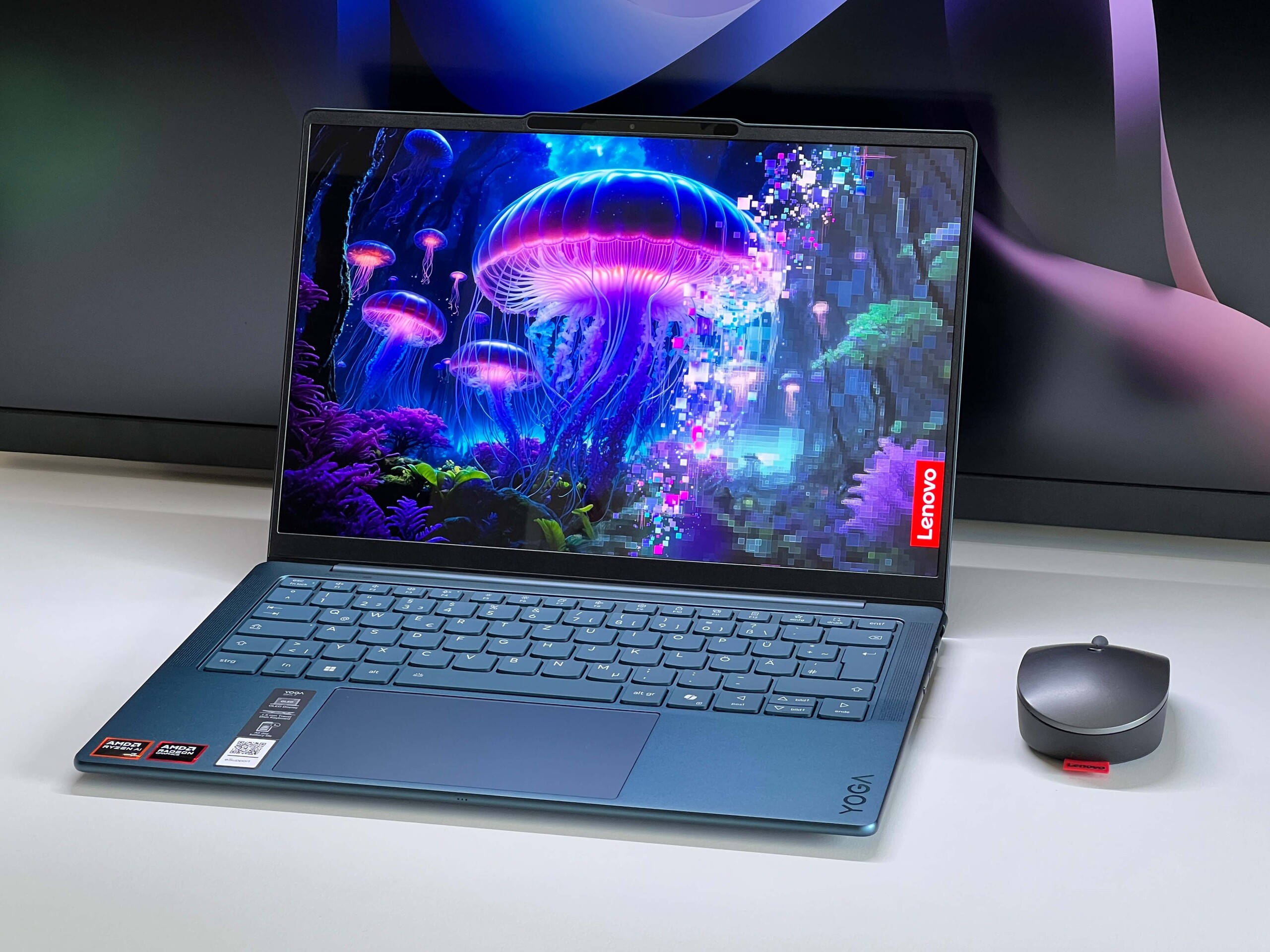







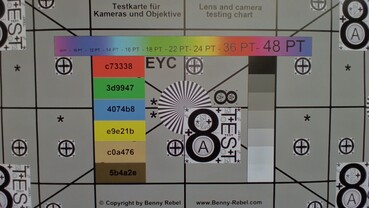


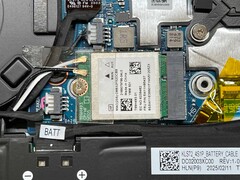

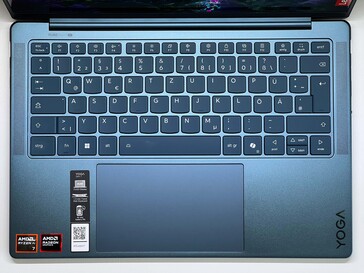
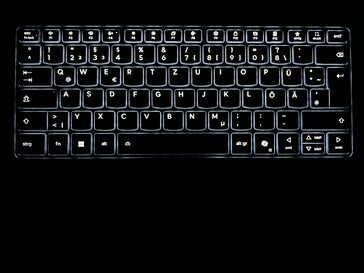
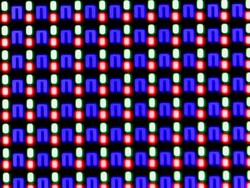

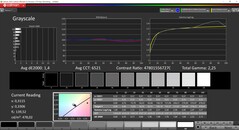





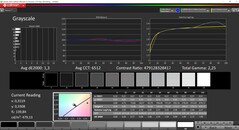

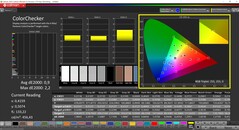

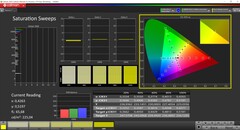

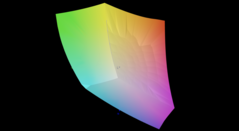

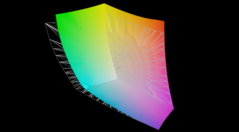
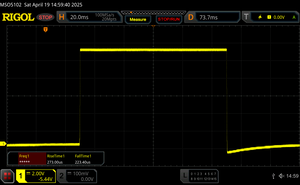
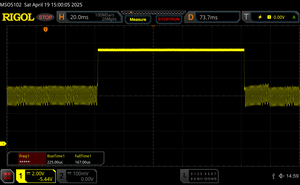








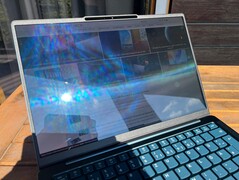
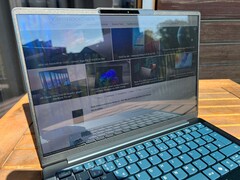
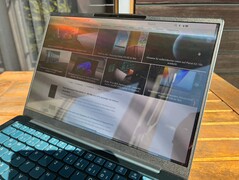






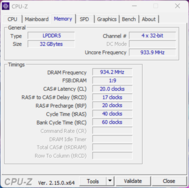
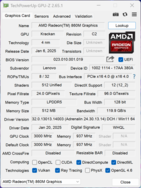
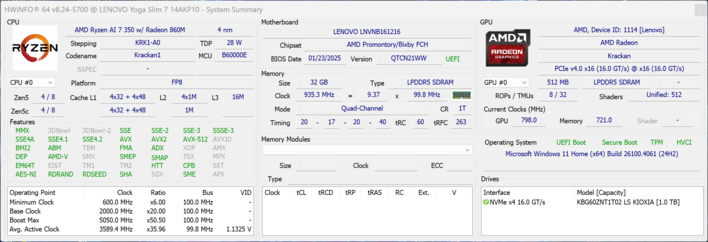

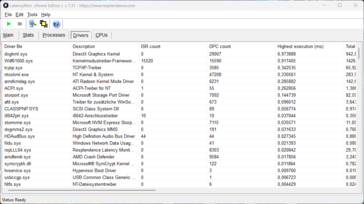

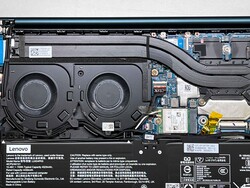


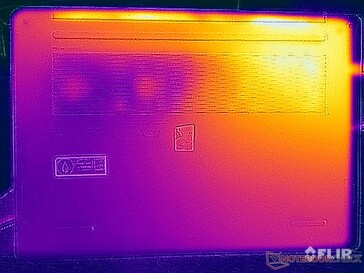

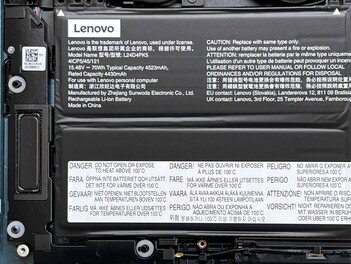
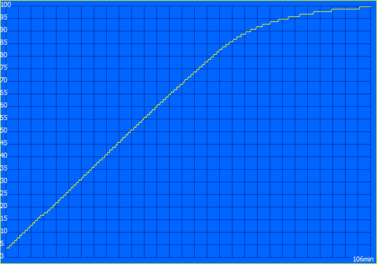
 Total Sustainability Score:
Total Sustainability Score: 